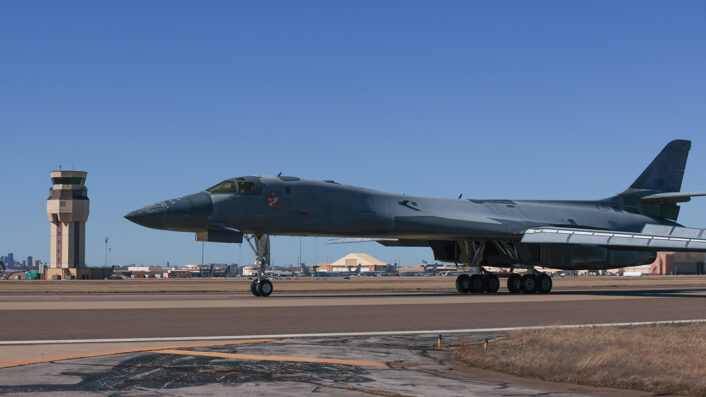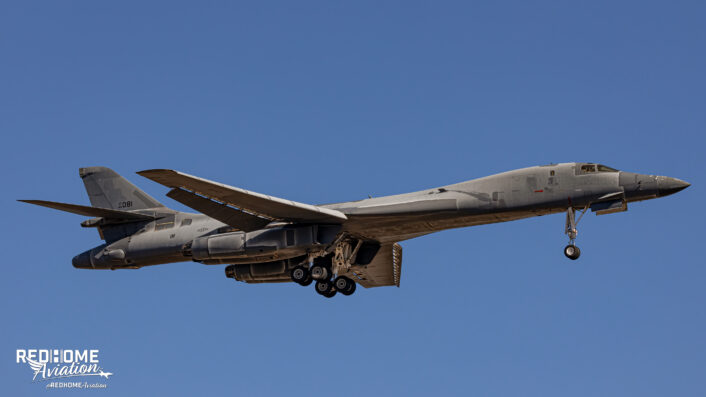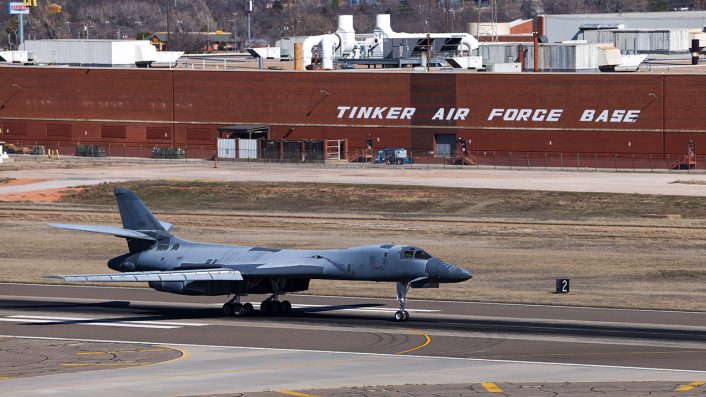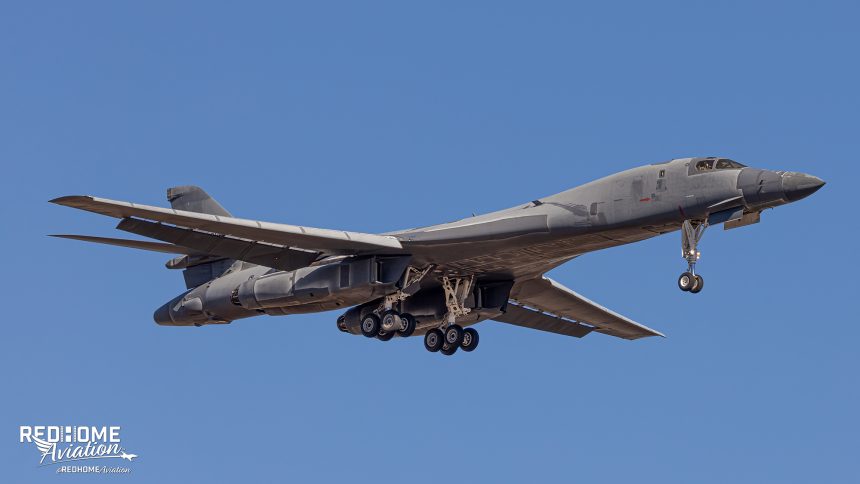“Lancelot” was stored at AMARG. It was pulled from the “Boneyard” to rejoin the Air Force’s Strategic Bomber Fleet.
A B-1B Lancer bomber of the 7th Bomb Wing, serial 85-0089, experienced a fire engine failure during routine maintenance at Dyess Air Force Base, Texas, on April 20, 2022.
With projected repair costs to fix the fire-damaged aircraft expected to be cost-prohibitive, the U.S. Air Force elected to regenerate one of the 17 B-1B bombers retired in 2021 and maintained “in a reclaimable condition”at the 309th Aerospace Maintenance and Regeneration Group’s “Boneyard”, at Davis-Monthan AFB, Arizona.
The restoration was required to keep the B-1B fleet at its congressionally mandated size of 45 bombers in inventory.
The process began in June 2023 and airframe 85-0081 “Lancelot” was selected to be “regenerated”.

Restoring “Lancelot”
According to the Air Force, the team from the B-1 System Program Office worked with their engineers and logistics colleagues to build a statement of work that provided the requirements to prepare the aircraft which spent almost three years (two years and eleven months) at the Boneyard. This ensured that the program office provided the right requirements to ensure a safe and reliable flight.
A team comprised of members from the 309th AMARG; Dyess’ 7th Bomb Wing; Tinker’s 76th Expeditionary Depot Maintenance Flight and 569th Egress Flight; along with the SPO restored “Lancelot” to flying condition, allowing the aircraft to be ferried to Tinker AFB, where it will undergo programmed depot maintenance at the Oklahoma City Air Logistics Complex prior to rejoining the Strategic Bomber Fleet. The aircraft will also receive upgrades missed during its retirement so that its capabilities match other aircraft in the fleet.
While the news about the “resurrection” of “Lancelot” has emerged recently, the aircraft was flown to Tinker on Feb. 8, 2024. The photo at the top of this article was taken on that day, at 1:47 PM Central Time, by our friend Rob Stephens at Redhome Aviation and shows “Lancelot” about to land at Tinker.

“She is currently undergoing Programmed Depot Maintenance, as well as bringing her up to date on Time Compliant Technical Orders and any systems upgrades she missed in her nearly three years in the Boneyard,” Stephens explains on a FB post.
“The dark areas on the aircraft are the original paint that was covered in the silicone-looking spraylat sealant, the white around the dark is the spraylat that would not come off with the rest,” he explains. “The lighter looking paint has been baked in the hot Arizona sun for the last three years. The crews at AMARG and deployed crews from OC-ALC inspected and replaced any components need for a successful ferry flight from Davis-Monthan AFB, AZ to Tinker AFB, OK.”
After Tinker’s OC-ALC Artisans complete their work, the aircraft will undergo a functional check flight by the 10th FLTS before being delivered back to Dyess AFB for operational sorties.
Why the restoration is important
Lt. Col. Michael Griffin, 10th Flight Test Squadron director of operations and a crew from 10th FLTS flew the aircraft from Davis-Monthan to Tinker. Griffin highlighted the importance of the regeneration effort in maintaining the B-1B fleet’s operational readiness in a press release.
“Pulling ‘Lancelot’ out of the 309th AMARG and putting it through program depot-level maintenance at Tinker will restore the aircraft to the operational units, allowing them to continue to support the nation’s call for power projection,” said Griffin.

“I feel this project is important in continuing to prove the reliability of the B-1 and its use for airpower and air superiority,” said Justice.
He added, “our B-1 community is a tight knit family who demonstrates over and over that the B-1 is a viable platform when given the right people and money, to produce the requirements needed to meet our flying commitment to airpower.”
The other “Lazarus” bombers
Some years before “Lancelot”, two U.S. Air Force B-52 Stratofortress bombers were restored out of the “Boneyard to be returned to front-line service: “Ghost Rider”, tail number 61-0007, and “Wise Guy”, tail number 60-0034.
Both aircraft had been retired and put on long term storage, where they were supposed to remain to be cannibalized of parts needed by other B-52Hs.
The plans changed and both BUFFs were resurrected so that the number of B-52 bombers mandated by Congress could be brought back to full strength at 76 aircraft. After being mothballed for seven years in the desert “Ghost Rider” returned to service in 2015 with the 5th Bomb Wing at Minot AFB, North Dakota. The second “Wise Guy”, spent 10 years in the desert before being resurrected in 2020 and return to the 5th Bomb Wing in 2021.
The two “Lazarus” aircraft were also regenerated at the Tinker Air Force Base’s Oklahoma City Air Logistics Complex.









